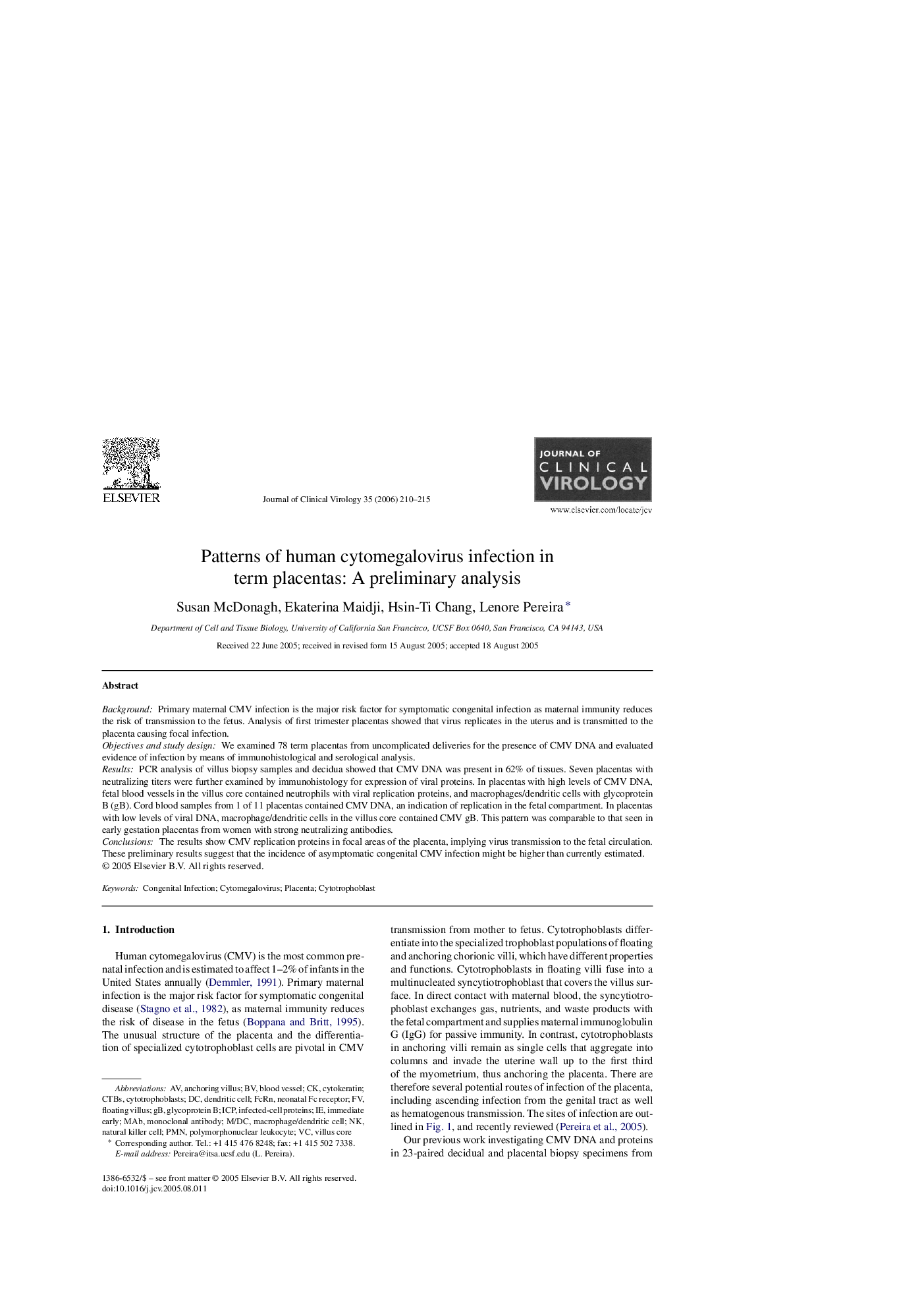| Article ID | Journal | Published Year | Pages | File Type |
|---|---|---|---|---|
| 3371269 | Journal of Clinical Virology | 2006 | 6 Pages |
BackgroundPrimary maternal CMV infection is the major risk factor for symptomatic congenital infection as maternal immunity reduces the risk of transmission to the fetus. Analysis of first trimester placentas showed that virus replicates in the uterus and is transmitted to the placenta causing focal infection.Objectives and study designWe examined 78 term placentas from uncomplicated deliveries for the presence of CMV DNA and evaluated evidence of infection by means of immunohistological and serological analysis.ResultsPCR analysis of villus biopsy samples and decidua showed that CMV DNA was present in 62% of tissues. Seven placentas with neutralizing titers were further examined by immunohistology for expression of viral proteins. In placentas with high levels of CMV DNA, fetal blood vessels in the villus core contained neutrophils with viral replication proteins, and macrophages/dendritic cells with glycoprotein B (gB). Cord blood samples from 1 of 11 placentas contained CMV DNA, an indication of replication in the fetal compartment. In placentas with low levels of viral DNA, macrophage/dendritic cells in the villus core contained CMV gB. This pattern was comparable to that seen in early gestation placentas from women with strong neutralizing antibodies.ConclusionsThe results show CMV replication proteins in focal areas of the placenta, implying virus transmission to the fetal circulation. These preliminary results suggest that the incidence of asymptomatic congenital CMV infection might be higher than currently estimated.
